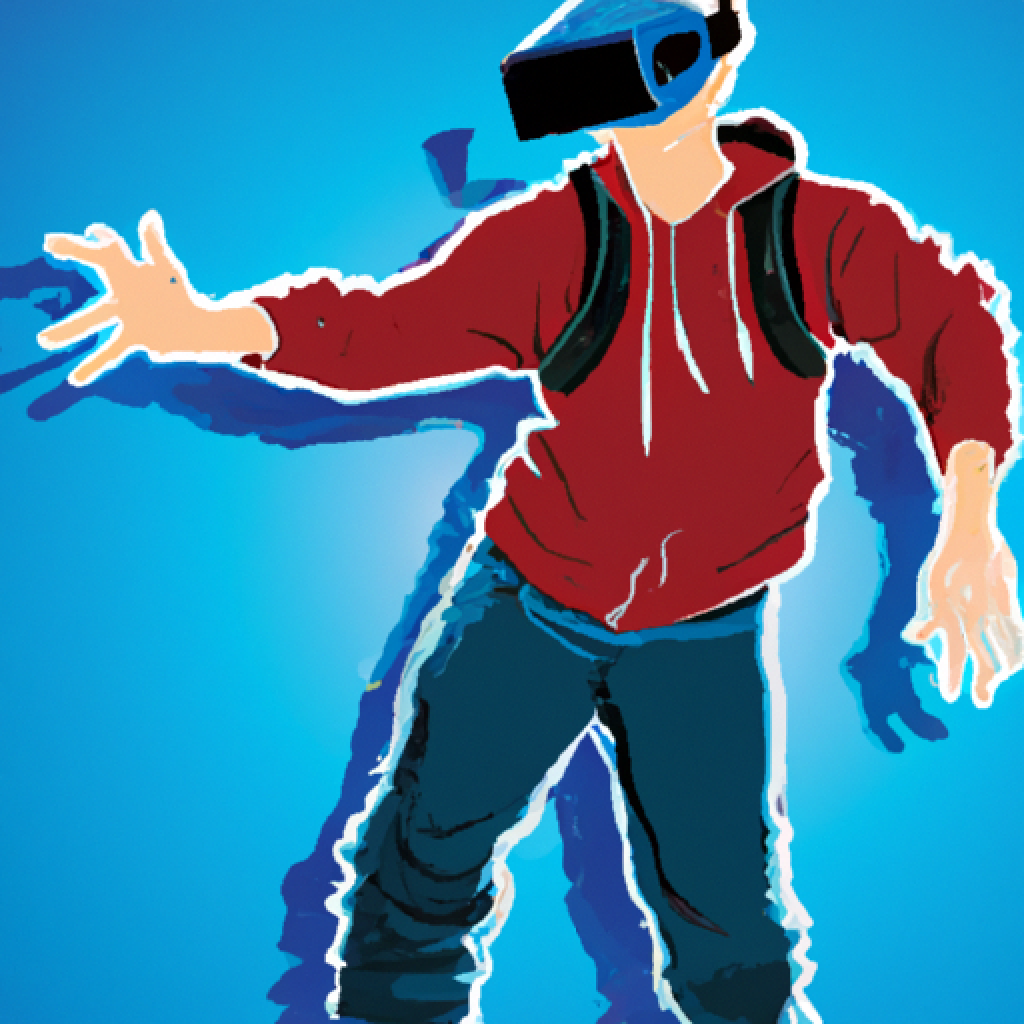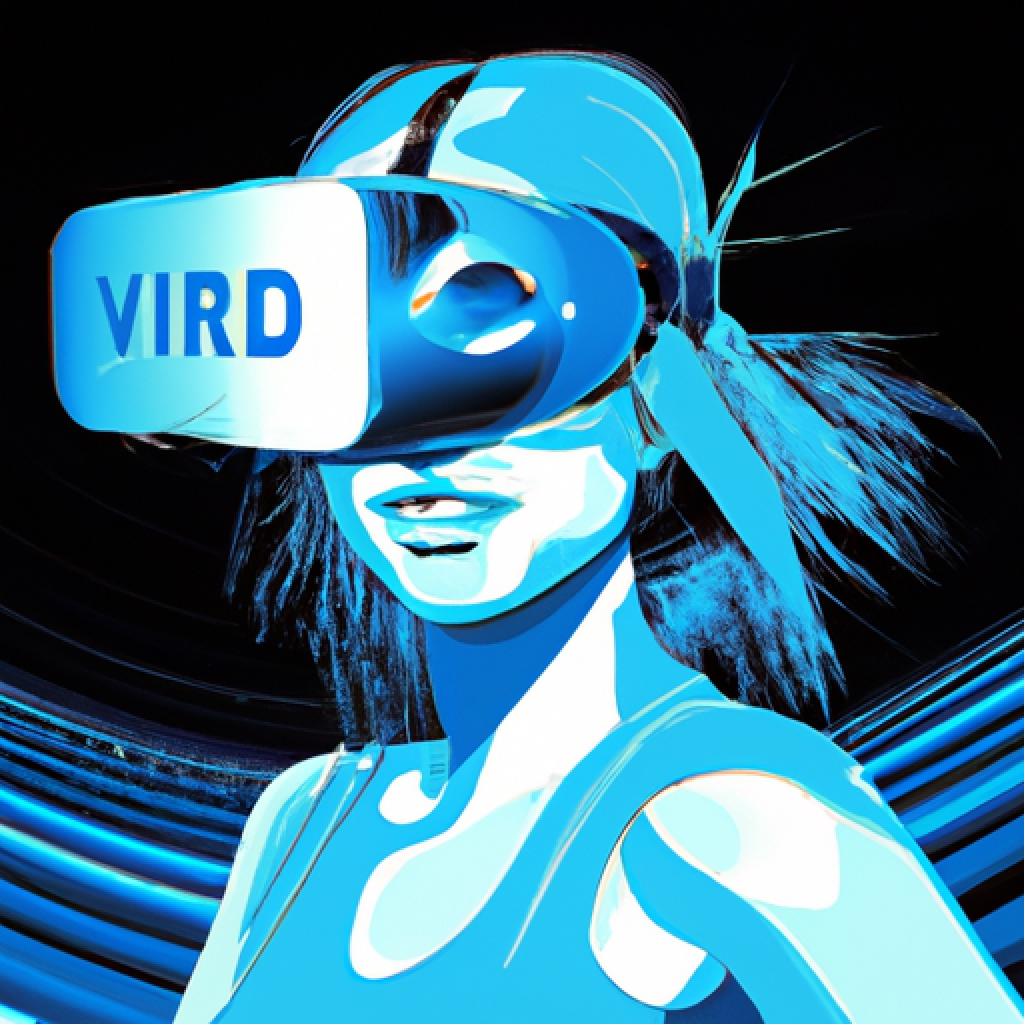How Long Should You Play VR A Day?

I never thought I would find myself questioning the appropriate amount of time to indulge in virtual reality (VR) gaming, but here I am. The allure of diving into immersive worlds of gaming seems irresistible, especially when equipped with a state-of-the-art VR headset. However, as I navigate this virtual rabbit hole, I can’t help but wonder: How long should I actually spend playing VR each day? Is there a sweet spot where enjoyment meets responsible gaming? Join me as we explore the recommendations and considerations surrounding the duration of VR gameplay.

Understanding Virtual Reality
Virtual Reality (VR) is an immersive technology that allows users to experience and interact with a simulated three-dimensional environment. It creates a sense of presence, transporting the user into a virtual world that can be completely different from their physical surroundings. With VR, users can explore new worlds, engage in interactive experiences, and manipulate objects as if they were real.
Definition of VR
Virtual Reality refers to the use of computer technology to create a simulated environment that can be explored and interacted with by a user. The technology typically involves wearing a VR headset that tracks the user’s head movements, allowing them to look around and feel as though they are present in the virtual world. VR can also incorporate other sensory inputs, such as haptic feedback, to further enhance the user’s immersion and engagement.
How VR works
VR works by combining multiple technologies to create the illusion of presence in a virtual environment. The key components of a VR system include:
-
VR Headset: The VR headset is the primary interface between the user and the virtual world. It typically consists of a display screen, lenses, and sensors to track the user’s head movements.
-
Head Tracking: The headset’s sensors track the movements of the user’s head and adjust the virtual world accordingly, ensuring that the user’s perspective matches their real-world movements.
-
Motion Tracking: In addition to head tracking, VR systems may also use motion-tracking devices to track the user’s body movements. These devices can capture the user’s hand movements, allowing them to interact with objects in the virtual world.
-
Audio: Immersive audio is an essential component of VR, as it helps create a sense of presence. VR systems may utilize surround sound or 3D audio technologies to provide realistic audio cues.
-
Computing Power: VR requires significant computing power to render the complex graphics and simulations in real-time. High-performance computers or gaming consoles are often used to generate the virtual environments.
Types of VR devices
There are several types of VR devices available, each offering a different level of immersion and interactivity. The most common types include:
-
Tethered VR Headsets: These headsets are connected to a computer or gaming console by a cable. They offer the highest level of immersion and graphical fidelity but require a powerful computer for optimal performance.
-
Standalone VR Headsets: Standalone headsets have built-in processors and do not require a separate computer or console. They offer a good balance of performance and convenience, making them suitable for casual and mobile VR experiences.
-
Mobile VR Headsets: Mobile VR headsets use smartphones as the display and processing unit. They are typically affordable and easy to use, but offer a less immersive experience compared to tethered or standalone headsets.
-
Augmented Reality (AR) Headsets: While not strictly VR, AR headsets blend virtual elements with the real world. They overlay digital content onto the user’s view, allowing for interactive experiences in a merged reality.
Effects of Prolonged VR Use
While VR can provide unique and exciting experiences, it is important to consider the potential effects of prolonged use on both the physical and psychological well-being of users.
Physical effects
Extended periods of VR use can lead to physical discomfort and health issues. Prolonged exposure to the virtual environment can cause fatigue, eye strain, and headaches due to the intense visual and sensory stimuli. Additionally, wearing a VR headset for long periods may lead to discomfort around the face, neck, and ears.
Psychological effects
VR can have psychological effects on users, especially when immersed in intense or emotionally challenging virtual experiences. Some users may experience symptoms of cybersickness, such as nausea, dizziness, and disorientation, similar to motion sickness. Additionally, VR content that involves violence, horror, or traumatic events may trigger feelings of anxiety or distress in sensitive individuals.
Recommended Duration of VR Play
To ensure a safe and enjoyable VR experience, it is important to consider the recommended duration of VR play.
Recommended time by manufacturers
Most VR headset manufacturers provide guidelines on the recommended duration of use. These guidelines typically suggest limiting VR sessions to 30 minutes to an hour at a time, with breaks in between to rest and refocus the eyes.
Insights from experts
While manufacturer recommendations offer a good starting point, it is also valuable to consider insights from experts in the field. Some experts suggest a gradual increase in VR playtime, allowing the user’s tolerance to build over time. Others advise listening to your body and taking breaks whenever discomfort or fatigue sets in.
Relation to age and health condition
The recommended duration of VR play may vary based on factors such as age and pre-existing health conditions. Children and adolescents, in particular, may require shorter VR sessions due to their developing visual systems. Individuals with conditions such as epilepsy or a history of migraines should consult their healthcare professionals for personalized advice on the safe use of VR.
Symptoms of VR Overuse
Overusing VR can lead to detrimental effects on both physical and psychological well-being. It is important to be aware of the symptoms of VR overuse to prevent any long-term negative impacts.
Physical symptoms
If you are spending too much time in virtual reality, you may experience physical symptoms such as eye fatigue, headaches, blurred vision, neck and shoulder strain, and general discomfort around the face and head. These symptoms can be a sign of overexertion and may indicate the need for a break from VR.
Psychological symptoms
VR overuse can also manifest in psychological symptoms. Excessive exposure to intense or disturbing virtual experiences may lead to increased anxiety, feelings of detachment from reality, and even the onset of a condition known as Virtual Reality Addiction (VRA). It is essential to be mindful of any changes in mood or mental well-being when engaging in VR activities.

Preventing VR Overuse
To ensure a healthy and balanced approach to VR usage, it is necessary to take proactive measures to prevent VR overuse.
Setting time limits
One effective strategy to prevent VR overuse is to set specific time limits for each VR session. This can be achieved by using in-built software tools or external apps that allow you to track and manage your VR playtime. By adhering to a predetermined schedule, you can avoid spending excessive amounts of time in the virtual world.
Taking breaks
Regular breaks during VR sessions are crucial for allowing your eyes, body, and mind to rest. Every 30 minutes to an hour, take a short break by removing the headset and focusing on objects in the real world. Engaging in gentle stretching or eye exercises can help alleviate any discomfort or strain caused by prolonged VR use.
Mixing VR use with other activities
To avoid becoming too immersed in VR, it is beneficial to incorporate other activities into your daily routine. Engaging in physical exercise, social interactions, and outdoor activities can provide a balanced lifestyle and prevent over-reliance on VR.
Impact of VR on Eyes
One common concern regarding VR usage is its potential impact on eye health. While prolonged use of VR can strain the eyes, there are steps you can take to minimize any negative effects.
Strain on eyes
The close proximity of the VR display to the eyes, coupled with the constant focus adjustment and rapid image movement, can strain the eye muscles and cause discomfort. Additionally, the blue light emitted by VR displays may contribute to digital eye strain.
Research on VR use and eyesight
Research on the long-term effects of VR on eyesight is still limited. However, existing studies suggest that short-term use of VR is unlikely to cause permanent damage to the eyes. It is important to note that individuals with pre-existing eye conditions may be more susceptible to discomfort or strain during VR use.
Preventing eye strain from VR
To reduce the risk of eye strain while using VR, follow these recommendations:
-
Take regular breaks and allow your eyes to rest every 30 minutes to an hour.
-
Ensure the VR headset is properly adjusted to maintain a comfortable and clear focus. A blurry or misaligned image can increase eye strain.
-
Keep the VR headset clean to avoid microorganisms that could lead to eye infections or discomfort.
-
Consider using blue light filtering glasses or applying blue light filters to the VR display to reduce exposure to potentially harmful blue light.

VR and Motion Sickness
Motion sickness is a common issue experienced by some VR users, and understanding its causes can help mitigate its effects during VR play.
Why VR may cause motion sickness
Virtual Reality can induce motion sickness due to a phenomenon known as “cybersickness.” Cybersickness occurs when there is a disconnect between the signals received by the eyes and the inner ear, which senses balance and movement. As the virtual world moves in response to head movements, it can create a sensory conflict, leading to feelings of nausea, dizziness, and discomfort.
How to mitigate motion sickness during VR play
To minimize the risk of motion sickness while using VR, consider the following strategies:
-
Start with shorter VR sessions and gradually increase the duration as you build tolerance.
-
Choose VR experiences with less intense movement or limit exposure to experiences that are known to cause motion sickness.
-
Take breaks whenever you start to feel any signs of motion sickness. Removing the headset and focusing on a stationary object can help reorient your senses.
-
Ensure that the VR headset is properly calibrated and adjusted to minimize any lag or latency, as this can exacerbate motion sickness symptoms.
Importance of Proper VR Setup
Setting up your VR system correctly is crucial for optimizing your VR experience and minimizing any discomfort or issues during gameplay.
Adjusting VR settings correctly
Before starting a VR session, take the time to adjust the VR settings to suit your individual preferences. Make sure the headset is tightly secured but not overly tight, and ensure the lenses are properly positioned for maximum clarity.
Optimal environment for VR play
Creating an optimal environment for VR play is also essential. Ensure that the area you will be using for VR is clear of obstacles, providing ample space for movement. Consider placing soft padding or rugs on the floor to prevent injuries from accidental falls. Additionally, adequate lighting can aid in maintaining a sense of balance between the virtual and physical worlds.

Addressing VR Addiction
VR addiction is a growing concern, particularly among individuals who excessively engage in VR activities. It is crucial to recognize the signs of addiction and take steps to address it.
Signs of VR addiction
Signs of VR addiction include:
-
Escalating use of VR, with an increasing amount of time spent in virtual environments.
-
Neglecting real-life responsibilities, such as work, relationships, and self-care, due to excessive VR use.
-
Withdrawal symptoms and irritability when unable to access VR.
-
Difficulty controlling VR usage, despite negative consequences.
Steps to address VR addiction
If you or someone you know is struggling with VR addiction, the following steps can help address the issue:
-
Recognize the problem and acknowledge the negative impact of excessive VR use on personal well-being.
-
Reach out for professional help, such as therapy or counseling, to address underlying mental health issues and develop healthier coping mechanisms.
-
Set specific goals and limits for VR usage, gradually decreasing the amount of time spent in virtual reality.
-
Seek support from friends, family, or support groups to maintain accountability and create a supportive environment during the recovery process.
Benefits and Risks of VR
Virtual Reality offers a range of benefits, but it is essential to be aware of the potential risks and side effects associated with its use.
Benefits of VR use
Some of the key benefits of VR include:
-
Immersive and engaging experiences: VR allows users to explore new worlds, visit historical sites, or engage in interactive storytelling, providing a sense of presence and emotional connection.
-
Training and education: VR has immense potential in fields such as medicine, aviation, and military training, offering a safe and controlled environment for practical learning.
-
Therapeutic applications: VR has been used effectively in therapy for phobias, post-traumatic stress disorder (PTSD), and pain management, providing a controlled and immersive environment to address specific challenges.
Potential risks and side effects of VR
Alongside the benefits, VR carries certain risks and potential side effects:
-
Physical discomfort and strain: Prolonged VR use can cause physical discomfort, eye strain, headaches, and musculoskeletal issues due to prolonged periods of wearing the headset.
-
Psychological effects: Some VR experiences, particularly those involving intense or disturbing content, may trigger anxiety, distress, or the onset of VR addiction.
-
Safety concerns: VR may pose safety risks if used in unsafe environments, such as tripping over obstacles or engaging in risky behaviors while immersed in virtual reality.
Balancing benefits and risks
To strike a balance between the benefits and risks of VR, it is important to use VR in moderation, follow recommended guidelines for safe usage, and be mindful of personal comfort and well-being. By being aware of the potential risks and taking proactive measures, users can maximize the benefits of VR while minimizing any negative effects.
In conclusion, Virtual Reality offers unique and captivating experiences, but it is crucial to understand the potential effects of prolonged use and take steps to mitigate any risks. By adhering to recommended guidelines, setting time limits, and being mindful of physical and psychological well-being, users can enjoy the benefits of VR while maintaining a healthy balance in their real and virtual worlds.








